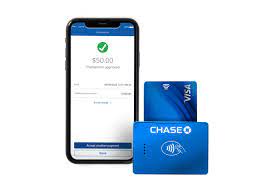For the purpose of streamlining and automating the source-to-settle process, businesses invest in procurement management solutions. Procurement management software plays a significant role in cost control by generating savings through negotiated purchasing agreements with suppliers. So in this article are all the answers you need about procurement management.
What is Procurement Management
Procurement management is the management of all the procedures involved in purchasing the commodities, services, and materials required for effective business operations that fall under the purview of procurement. The terms “sourcing,” “purchasing,” and “procurement” may be used interchangeably depending on the business and industry to refer to the function of procuring supplies and managing the process, with sourcing being considered more strategic and purchasing and procurement being used to refer to the actual operational function.
Essential Features of a Cloud-Based Procurement Management System
Companies need agile technologies to assist them in enhancing their procurement procedures in a market that is becoming more complex and dynamic. Strategic procurement groups are increasingly adopting Integrated, cloud-based software suites that include supplier management, sourcing, contract management, proactive risk management, and transactional procure-to-pay capabilities.
Companies may make informed decisions and proactively manage ongoing tasks throughout the source-to-settle cycle by utilizing a comprehensive procurement solution. The following is a list of components of an integrated cloud-based procurement management solution:
#1. Purchasing Management
Before beginning talks, strategic procurement first identifies and qualifies potential suppliers. It entails collecting, analyzing, and tracking supplier data to ensure vendors adhere to corporate regulations. Using self-service profiles and internal and external questionnaires, you may gather crucial supplier qualification data with procurement management software. Choose the best vendors by evaluating supplier qualifications, risk considerations, and policy compliance.
Key features in procurement solutions include robust spend management covering budgeting, expense tracking, and cost optimization. Advanced sourcing capabilities facilitate efficient supplier identification, negotiation, and contract management. Effective supplier tools manage databases, track performance, and foster collaboration. Seamless integration with ERP, accounting, inventory, and e-commerce systems ensures smooth data flow.
Analytics provide insights into processes, supplier performance, and spending. Compliance and risk management features ensure regulatory adherence and mitigate supplier risks. Mobile accessibility allows on-the-go access, while collaboration tools enable bid submissions and order tracking. Scalability, flexibility, user-friendly interfaces, and comprehensive support promote adoption and successful implementation.
#2. Sourcing
Manually defining specifications and gathering and analyzing supplier quotes can be time-consuming and prone to mistakes. It might even put off significant purchases.
To achieve bottom-line results, smarter document creation, negotiation engagements, and supplier selection use negotiation best practices. It is simple to combine efforts and produce more effective denial documents because of embedded social collaboration. With the use of award analysis tools, you can swiftly assess supplier bids based on specified criteria, such as price, quality, and value, enabling you to make the optimal award choice based on your particular business needs.
#3. Contract Administration
Effective administration of procurement contracts is essential. Manually managing the process might be time-consuming. But with a contemporary procurement management system, assisted authorship that makes use of preapproved clause libraries, standardized templates, and embedded social collaboration can streamline contract creation.
Implementing robust contract tracking and monitoring mechanisms is crucial for staying on top of key milestones, deadlines, and deliverables. Utilizing automated alerts and reminders can help proactively address any potential issues from the agreed-upon terms. Moreover, conduct periodic contract reviews and audits to identify areas for improvement and adhere to legal and regulatory standards for compliance management.
#4. Requisitioning
When buying is not adequately handled during the procure-to-pay cycle, negotiated savings are soon lost. Through business policies, controls, and approvals, modern procurement management software makes sure that the savings that have been agreed upon are implemented.
Employees may browse and shop for goods and services fast and easily with a user-friendly experience. Little to no training is necessary. Assuring that negotiated pricing and terms are automatically enforced through supplier catalogs and customizable approval workflows designed to limit spend and cut expenses is made possible by robust search capabilities, smart forms, shopping lists, and tailored buying experiences.
#5. Purchasing
By automating common procure-to-pay processes like the drafting of purchase orders, you have more time to look for further opportunities for cost savings. You may expedite the procedure while enforcing negotiated pricing and guaranteeing policy compliance using a cloud-based procurement management solution. Create purchase orders automatically from accepted requisitions. Give your procurement teams information on exceptions, status, and necessary actions. Utilize the inbuilt social features to interact with your suppliers.
#6. Receipts to be Made
Processing supplier invoices manually takes a lot of time and is prone to error. Utilizing an integrated procurement management system enables you to save money on labor and benefit from early payment reductions. This comprises an effective payment management system that enables suppliers to transmit invoices electronically and that facilitates quicker processing with the use of optical scanning, machine learning, and automated purchase order matching.
Which Steps Comprise the Procurement Management Process
These essential phases are often included in the basic “procure-to-pay” process, which is the overall purchasing procedure a business follows when making a purchase:
#1. Planning and Specifying
Establish the product or service requirement, establish the product’s specifications, and then plan—or forecast—when and how the product will be ordered or reordered based on current facts and predictions.
#2. Finding and Choosing Suppliers
Choose a supplier to satisfy your product needs, either from a list of approved vendors or recommended suppliers you already work with or by looking up new vendors and putting out an RFx or request for information, proposal, or quote.
#3. Contracting and Bargaining
Establish expectations and clearly express requirements to suppliers before engaging in direct negotiations to get an agreement on the best price and terms for the goods. Once all conditions have been agreed upon, complete and sign the supplier agreement.
Procurement Management Project
For projects in a range of industries to successfully complete their goals, external materials and resources are needed. Procurement management project, which involves the selection, coordination, and upkeep of these products and services, is crucial to the effective execution of the project. You can accomplish the objectives of your project more successfully if you are aware of the procedures, advantages, and uses of project procurement management.
What is Procurement Management Project?
A procurement management project is the development and maintenance of connections with outside resources necessary to accomplish a project. A project procurement manager interacts with suppliers to purchase, lease, or hire the goods and services required to complete the project’s goals. Most frequently, suppliers are chosen after they have submitted bids to collaborate with companies looking for their goods or services.
Product procurement management involves four crucial procedures:
#1. Purchasing and Planning
A series of procedures called planning procurement assist organizations to identify the resources they will require to complete a project and the size of their budget. When making plans for purchase, project procurement managers frequently take the following factors into account:
- The project’s necessary materials and resources,
- The ones they already have and those that need to be procured
- The contract requirements for outside purchases
- The delivery date requirements
- The deadlines for the project’s major milestones
- The legal terms and conditions
- The industry safety standards for the materials and resources
#2. Executing a Purchase
Project procurement managers evaluate vendor bids and choose partnerships based on their project needs after preparing for procurement. During this stage of the procurement process, vendor talks frequently occur, and all parties sign the contracts that have been reached. At this stage, project procurement managers may also make payments for goods and services.
#3. Managing Purchasing
Once contracts are in effect, procurement management and control are crucial to preserving vendor relationships and guaranteeing that services and goods perform as planned for the duration of the project. Controlling procurement frequently entails the following activities:
- Evaluating routine internal status reports
- Examining contractor agreements
- Examining progress and performance reports from vendors
- Conducting inspections and audits
- Evaluating work orders Issuing additional payment as necessary
#4. Complete the Procurement
All relevant procedures for terminating a partnership or contract are included in closing procurement. This frequently entails assessing the work or services delivered, renegotiating any modifications to the original contract’s conditions, and verifying the payments made and received. Upon the completion of the purchase, organizations may also submit a formal release of liability. This agreement attests to the vendor’s compliance with the provisions of the original agreement and discharges them from further obligations related to the project.
Project Procurement Management Advantages
Projects of all sizes and degrees of complexity can benefit from adding procurement management for a number of reasons, including:
#1. Higher Quality
Project procurement management enables businesses to negotiate in-depth service agreements that best meet their requirements. It can boost the likelihood that the products and services will be of a high caliber. A greater degree of quality assurance may encourage future funding and investments by giving stakeholders more assurance about a project’s performance.
#2. Reduced Risk
By specifying pricing, procedures, and service quality, the process of creating and negotiating service contracts can assist organizations in better understanding their vendor options. This can aid in lowering the possibility of contract terms being broken, which could cause delays or adversely affect a project’s success.
#3. Managed Costs
Procurement conditions that have been carefully negotiated are a wonderful method to cut costs and manage spending. Organizations may benefit from procurement management if they want to understand better the expenses involved in completing a project and choose goods and services from suppliers who can meet their demands without going over their budget.
The Duties of the Procurement Management Project
Project managers are responsible for a variety of tasks throughout project procurement. Project procurement managers often do the following five tasks, though they may differ based on the project and its goals:
#1. Project Launch
During project initiation, a project procurement manager may start the procurement process. To talk about project goals and deadlines, they frequently communicate with management, executives, and team members. Discussing the budget, internal resources, and high expectations may also be part of this.
#2. Participant Coordination
Projects frequently involve a number of stakeholders, including consultants, executives, liability experts, project teams, and business owners. To ensure that all parties involved in the project are on the same page regarding its goals and objectives, the project procurement manager must coordinate various groups and individuals. They should achieve this by identifying all significant stakeholders and involving them as needed throughout the project.
#3. Coordination of Vendors
Frequently, several vendors will work on the same project. Project procurement managers must efficiently handle the work of several contractors. A project manager may plan group meetings or demos for vendors at this time and, as needed, help contractors communicate with one another.
#4. Purchasing Strategy
A procurement plan is crucial for coordinating expectations and setting up workflows. Project managers frequently make lists and papers during the procurement planning phase that include the materials and resources required, the schedules and milestones, and probable ways to get in touch with vendors. Additionally, they might use Internet networking sites, classified advertisements, and their professional networks to market their demand for contractors.
Procurement Management Plan
Documents called procurement management plans specify a project’s schedule needs and outline the actions needed to enter the final contract.
The strategy outlines the methods by which the buying organization will obtain the products and services it needs, including:
- Outlining what has to be bought
- Calculating the price of purchases
- Establishing a schedule for reorders
Utilize procurement software to streamline sourcing, vendor selection, and contract management. Establish clear procurement objectives, assess supplier capabilities, and negotiate favorable terms. Implement robust tracking mechanisms to monitor deliveries, quality, and costs. Regularly review performance metrics and adjust strategies as needed for continuous improvement. Integrate data analytics for informed decision-making and risk mitigation.
How Important Is a Procurement Management Plan
A process called procurement management aids businesses in making cost- and time-effective purchases of goods and services.
The direction of the organization’s procurement activities is established by an efficient procurement management plan, which also guarantees that they are in line with the overall business strategy of the company. Having a procurement management plan in place has several advantages. The ability to save money for corporations is arguably the most significant benefit. Organizations can avoid splurging on unneeded things or paying more than necessary for the items they do need by having a sound procurement strategy.
Components of a Procurement Management Plan
#1. Statement of Work
The document that outlines the product or service that has to be purchased, as well as the goals and specifications for that product or service, is known as the statement of work.
#2. Baseline for Purchasing
The agreed timeframe, costs, and performance criteria for the procurement are described in great detail in the procurement baseline.
#3. Selection Criteria for Sources
In order to examine possible prequalified suppliers and choose the best one for the project schedule, the source selection criteria are the vendor management elements that will be applied.
Procurement Management Salary
The average Procurement Manager pay in the United States is $123,400; however, the normal salary range is between $110,100 and $139,300. Salary ranges can vary significantly depending on a variety of crucial aspects, including schooling, credentials, supplementary talents, and the length of time you’ve been working in a given field. Salary.com assists you in determining your precise pay target by providing more online, real-time compensation data than any other website.
What is Procurement Management?
The method by which a company performs, approves, monitors, and maximizes its expenditures on goods and services is known as procurement management. A procurement team’s primary goal is to lower overall purchasing costs and expedite the acquisition of the supplies and services a business need to generate products.
What is a Procurement Management System?
Another name for procurement management is the source-to-settle process. It includes managing the ongoing supplier connections for the business as well as the assessment, choice, and drafting of formal contractual agreements.
What is the Main Purpose of Procurement Management?
For projects and procedures to move forward successfully, procurement management makes sure that all goods and services are correctly procured. When optimized to save money, time, and resources, procurement can be used as a competitive advantage rather than just a company need.
What are the seven Stages of Procurement Management?
- Recognizing Needs
- Purchase Request
- Reviewing Requisition
- Solicitation Process
- Evaluation and Contract
- Order Management
- Approvals and Disputes for Invoices
What are the Four Main Roles of Procurement Management?
Sourcing, negotiating, managing contracts, and managing supplier relationships are the four primary functions of procurement. To be successful, these initiatives need a solid grasp of organizational goals, market trends, and supplier capabilities.
Conclusion
Chief Procurement Officer (CPO) and other executive-level jobs in procurement have become more common due to the impact of procurement management on the bottom line, the adoption of new methods, and its strategic potential. According to LinkedIn Economic Graph Research, the position has a 15% growth rate (as a share of all C-suite hiring last year) and is currently ranked 11 on the list of fastest-growing C-suite positions.
Related Articles
- PROCUREMENT SOFTWARE: Top Free Software & Companies in 2023
- Project Procurement Management: Detailed Guide To The Procurement Processes
- WHAT ARE MANAGED SERVICES: Definition, Types, Examples & Benefits
- RELEASE MANAGER: Definition, Job Description, Salary & How to Become One
- CLOUD ENGINEER: Definition, Duties, Jobs, Salary & How to Become One
- PROCUREMENT MANAGEMENT SYSTEM: Types and List of Top Software Options
- How Procurement Consultants Help Businesses Save Money and Increase Value
- SUPPLIER MANAGEMENT SYSTEMS: Process and Best Tools






